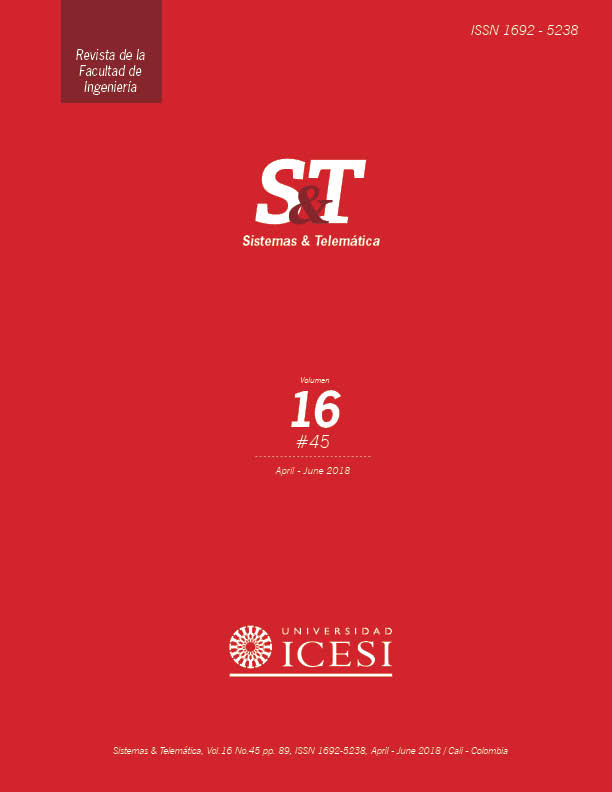Pulse oximeter with Internet data visualization
DOI:
https://doi.org/10.18046/syt.v16i45.2746Keywords:
Pulse; oximeter; WebSoket; node.js; microcontroller; ESP8266.Abstract
In this work, we describe the design and construction of a pulse oximeter for remote patient monitoring. The proposed device uses the ESP8266 microcontroller as the core component to establish the wireless connection and send information to a node.js server. Then, a web service shows the saturation of oxygen and the heart rate through a WebSocket connection. This paper describes the hardware and software designs, justifying the decision to select each component of the proposed device. Finally, some experimental results are shown to illustrate the performance of the developed prototype.
References
Bencomo, S., Villazana, S., & Salas, B. (2016). Diseño y construcción de un oxímetro de pulso. Revista Ingeniería UC, 23(2), 162-171.
Chopra, V. (2015). WebSocket essentials: Building apps with HTML5 Web-Sockets. Birmingham, UK: Packt.
Espressif. (2017). ESP8266EX Datasheet [v. 5.7]. Retrieved from: https://www.espressif.com/sites/default/files/documentation/0a-esp8266ex_datasheet_en.pdf
Font, G. R., Pedret, C., Ramos, J., & Ortís, L. C. (2008). Variabilidad de la frecuencia cardíaca: concepto, medidas y relación con aspectos clínicos (i). Archivos de medicina del deporte, 123, 41-48.
Gómez-García, C.A. & Velasco-Medina, J. (2014). Sistema de pulsometría y capnografía para dispositivos móviles Android. Ingeniería Biomédica, 8(6), 36-44.
Koolman, J. & Röhm, K. (2005). Bioquímica: texto y atlas. Bogotá, Colombia: Médica Panamericana.
Li, K. & Warren, S. (2012). A wireless reflectance pulse oximeter with digital baseline control for unfiltered photoplethysmograms. IEEE Transactions on Biomedical Circuits and Systems, 6(3), 269-278.
López-Herranz, G. P. (2003). Oximetría de pulso: a la vanguardia en la monitorización no invasiva de la oxigenación. Revista Médica del Hospital General de México, 66(3), 160-169.
Marczenko, Z., Balcerzak, M., and Kloczko, E. (2000). Separation, preconcentration and spectrophotometry in inorganic analysis. Amsterdam, The Netherlands: Elsevier Science.
Mejía-Salas, H. & Mejía-Suárez, M. (2012). Oximetría de pulso. Revista de la Sociedad Boliviana de Pediatría, 51(2), 149-155.
Peñuela, O. A. (2005). Hemoglobina: una molécula modelo para el investigador. Colombia Médica, 36(3), 215-225.
Texas Instruments [TI]. (2015, June). OPT101 Monolithic photodiode and single-supply transimpedance amplifier. Retrieved from: http://www.ti.com/lit/ds/symlink/opt101.pdf
Texas Instruments [TI]. (2016). ADS111x ultra-small, low-power, I 2C-compatible, 860-SPS, 16-Bit ADCs with internal reference, oscillator, and programmable comparator. Retrieved from: http://www.ti.com/lit/ds/symlink/ads1115.pdf
Webster, J. (1997). Design of pulse oximeters. New York, NY: CRC.
Downloads
Published
Issue
Section
License
This journal is licensed under the terms of the CC BY 4.0 licence (https://creativecommons.org/licenses/by/4.0/legalcode).



